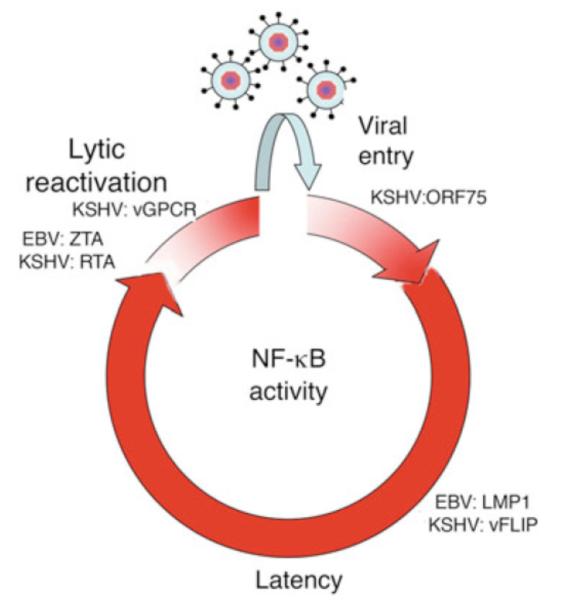Fig 3.
Model for the NF-κB activity kinetics throughout the course KSHV or EBV infection. Viral entry can trigger NF-κB activation, which can be caused by receptor binding and activity of the tegument protein encoded in ORF75 or KSHV. NF-κB induces expression of latent genes, such as EBV LMP1 and KSHV vFLIP, that in turn contribute to constitutive activation of the NF-κB pathway in the latently infected cells. Viral latency persists for a variable period of time, until unknown triggers downregulate NF-κB signaling and/or perturb the latent/lytic phase homeostasis. Consequently, a proportional increment in the expression of the EBV ZTA, EBV RTA and KSHV RTA major viral lytic activators occurs, which in turn further downregulates NF-κB, thereby propagating the lytic cascade. Once a biological threshold is reached, the latent-lytic switch is completed and viral replication occurs. Later in the lytic cascade, the expression of some viral lytic genes, such as KSHV vGPCR, may contribute to a new wave of NF-κB activation, which may have a role in extending the cell lifespan sufficiently to allow release of new viral particles until cytopathic effects of viral infection cause cell death.

